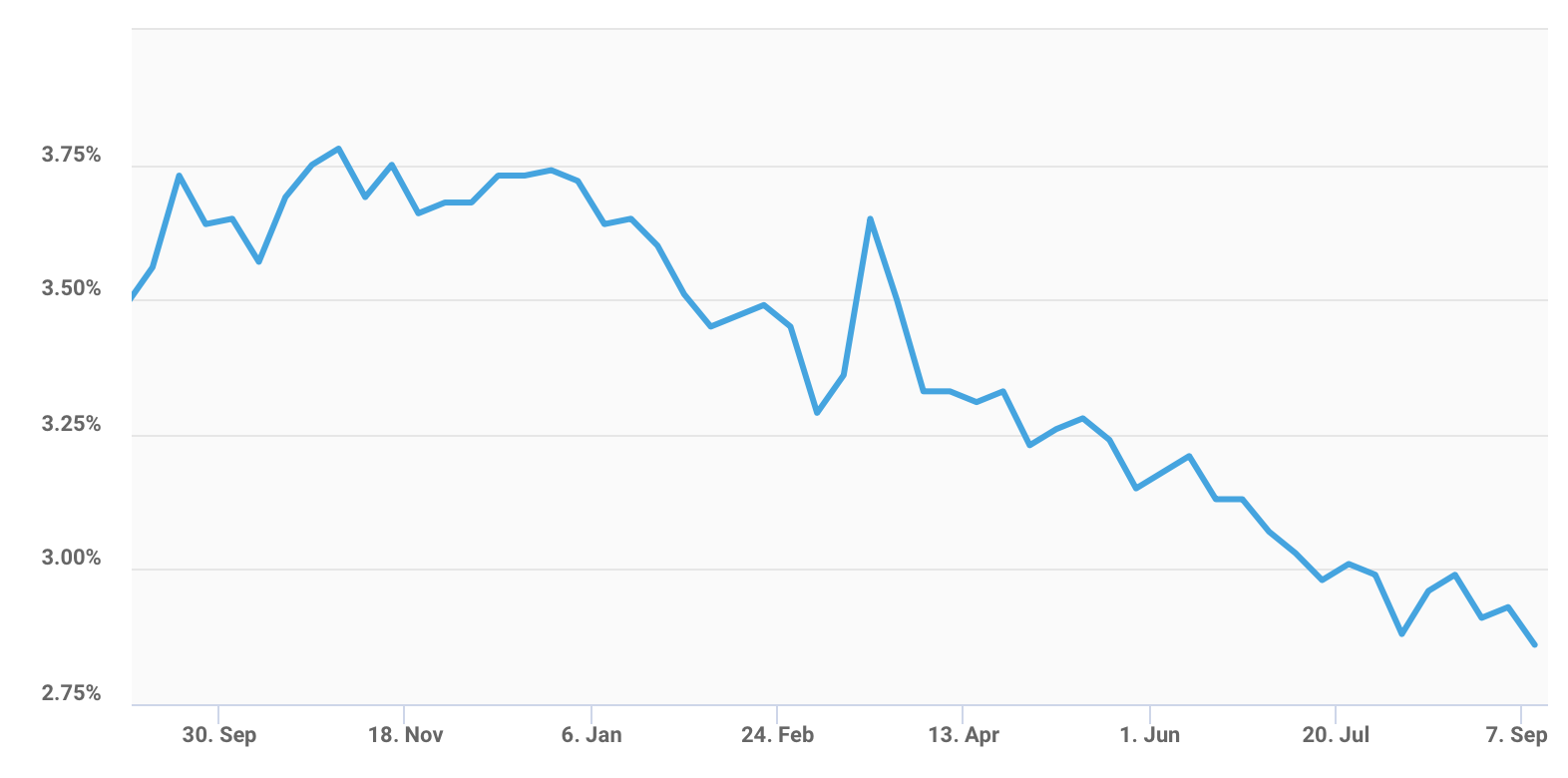The East Bay portion of the San Francisco Bay Area has become one of the…
Buying a Home in the Bay Area in 2021: Three Things to Know
Are you thinking about buying a home in the San Francisco Bay Area in 2021? Wondering what to expect from the local real estate market next year? You’ve come to the right place.
Below, we’ve broken down some of the most important trends Bay Area home buyers need to know about, this year and next.
Buying in the Bay Area, Now Versus 2021
Sure, it’s only September, and there’s still plenty of time to buy a house or condo during 2020. But at the same time, many home buyers are already looking ahead to 2021. They’re wondering if it’s better to rush out and make a purchase now, or wait until next year.
But how might that affect you? How might market conditions change between now and then? Here’s what you should know about buying a home in the Bay Area in 2021.
1. Mortgage rates could be higher in 2021.
During the week of September 10, 2020, the average rate for a 30-year fixed mortgage loan dropped to an incredibly low 2.86%. That was the lowest average we’ve seen in 50 years (to date).
And while industry forecasters expect rates to remain “low” for the foreseeable future, they could creep up a bit in 2021. It’s hard to imagine mortgage rates dropping much lower than they are now, even with the Federal Reserve’s stimulus measures.

The image above shows the average rate for a 30-year fixed mortgage over the past year or so. It’s based on the weekly survey conducted by Freddie Mac. As you can see, they’re much lower now (as of September 2020) than they were a year ago.
This is one important consideration for those planning to buy a home in the Bay Area in 2021. No one can predict future interest-rate movements with certainty. But there is a very real possibility that mortgage rates could go up through the end of this year and into next.
In a forecast published in August 2020, the Mortgage Bankers Association said it expects the average rate for a 30-year fixed mortgage to hover around 3.1% during the first part of 2021. That would be slightly higher than where we are right now, as of late summer.
If you’re prepared to buy a home in the Bay Area right now, you might want to expedite the process to take advantage of these current low rates. There’s more certainty if you act now and less certainty if you wait.
2. Home prices are rising across much of the Bay Area.
Home prices are another big concern for those planning to buy a house in the Bay Area in 2020 or 2021. And these trends can be summed up in two words – steady appreciation.
Home values in most parts of the region have been rising steadily over the past few months, despite the economic effects brought on by COVID-19.
Last month, the California Association of Realtors (CAR) reported that house values were up significantly in most parts of California. And that includes the Bay Area. In fact, they singled out our region as having one of the most significant home-price gains over the past year or so.
To quote that August 17 CAR report:
“Median home prices increased in all regions in July, with both the Central Coast and San Francisco Bay Area climbing more than 10 percent from last year.”
If this generally upward trend continues, those who wait until 2021 to buy a home in the Bay Area could encounter higher house values as well. The possibility of rising mortgage rates could create a “double whammy,” in terms of reduced affordability.
Again, we can’t predict future home-price trends with accuracy. But, as we’ve seen over the past few months, the pandemic hasn’t affected home prices very much. They’ve continue to rise across much of the state. So it’s a reasonable forecast to predict the continuation of that trend over the coming months.
Related: Bay Area home prices not falling
3. We will probably still be dealing with low inventory.
Housing markets across the Bay Area are currently experiencing low inventory levels. This is something rewritten about in the past. In short, there aren’t enough properties listed for sale to meet the demand from buyers across the region.
This is partly why we’ve seen rising home values over the past few years. We have a skewed or imbalanced supply-and-demand situation that is putting upward pressure on house values statewide.
According to the August 2020 CAR report mentioned earlier, the San Francisco Bay Area was tied with the Central Valley region for having the lowest level of housing market inventory as of July.
Back then, the Bay Area had about a 1.8-month supply of homes for sale. That was significantly lower than the national average. It’s the kind of housing market where home buyers have to compete, sometimes fiercely, for limited inventory.
Overall, the supply situation probably won’t change much between now and 2021. The real estate inventory levels we are seeing right now will probably continue through this year and into the first part of 2021.
So this factor doesn’t play as big a role, when it comes to buying now versus next year. It’s just something you should be aware of if you’re planning to buy a home in 2020 or 2021. Our advice is to start your housing search sooner rather than later, to account for tight supply conditions across the region.
Have mortgage questions? Bridgepoint Funding has been serving the mortgage needs of Bay Area borrowers for going on 20 years. We offer a wide range of mortgage products, some with flexible qualification criteria. Feel free to contact us with your mortgage-related questions.

